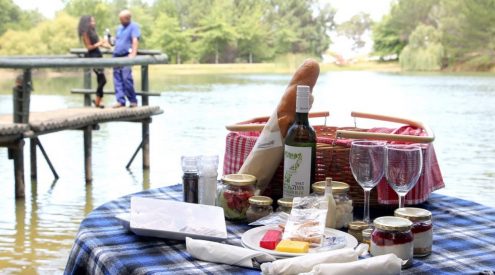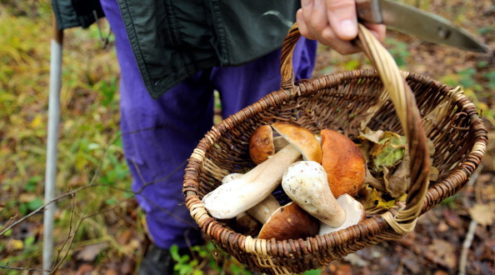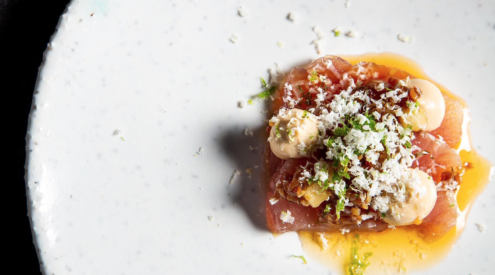Christmas is a time to relax, connect, and celebrate with family: no matter where you are in the world, food is the primary way of achieving this. Here are some traditional Christmas foods that couldn’t be more different in terms of ingredients and flavours, but all are reminiscent of home.
1. Buche de Noel, France
This translates as “Yule Log” in French, which is a custom dating back to Viking times when one huge log would be kept burning all throughout the darkest nights of winter solstice. This has became less practiced over the years due to increasing deforestation (and the advent of smaller fireplaces!) so this cake was created to continue the tradition. It’s similar to a Swiss roll, except that it’s stuffed with chocolate buttercream instead of jam, and decorated with chocolate shavings and pine-needles to imitate a log.
2. Lebkuchen and roasted chestnuts, Germany
Germany is famous for its huge Christmas markets, some of which date back to the 1400s. Depending on the town, they can last from one weekend to a couple of weeks in duration, but one thing that they all have in common is the smell of roasted chestnuts, which are sold hot from stalls. Lebkuchen is another favourite: a spiced biscuit that is often decorated with almonds and icing.
3. Ponche, Mexico
Ponche is the gluhwein of Mexico: a warm spiced drink made from guavas and tejocotes (a golden Mexican fruit, similar to a crab-apple), flavoured with cinnamon, piloncillo (raw sugar cane), cinnamon, and tamarind pods. Rum or tequila is usually added. Mexico has a Christmas tradition called posada, where a procession of people will imitate Mary and Joseph’s attempt to find an inn by visiting their neighbour’s houses. When they are let in everyone makes merry with ponche and snacks, and the hosts join in when it’s time to move on to the next house. The posada can become quite a daunting mouth to feed as the evening progresses!
4. Fried carp, Czech Republic
At this time of year, there’s a sudden proliferation of fresh carp in Czech market. Many families will buy early and keep it in the bathtub until Christmas Eve, when it is either fried or turned into fish soup. Either way, there will be plenty of potato salad on the table.
5. Txistorra, Spain
This is a Basque sausage that is very popular around the feast of St. Thomas (21 December) and in the days leading up to Christmas. It originated from the Basque district, and is comprised of minced pork encased in lamb tripe, seasoned with garlic, paprika and salt.
6. Panettone, Italy
Panettone was allegedly invented when a lovestruck boy managed to get an apprenticeship in the bakery of his beloved’s father. In an attempt to impress the object of his affection, he created this masterpiece: a very tall sweet bread loaf, flavoured with candied orange, lemon zest, and raisins. Legend doesn’t tell us whether this worked out for him, but given that making panettone from scratch takes at least three days, one would hope so. Although it originated in Milan, panettone is now enjoyed all over the world, particularly in Latin America.
7. Doro wat, Ethiopia
Ethiopians celebrate Christmas (known as Ganna) on 7th January, and after a sunrise church service and a hockey-like game, people gather to eat doro wat, a spicy chicken stew. It is often served with injera, a flatbread made from teff flour.
8. Risgrynsgrot, Sweden
This cinnamon rice pudding is the traditional way to end a Swedish Christmas feast. It’s customary for the cook to add one almond towards the end of the cooking time: the woman who finds the almond in her pudding is sure to be married within the year. If
9. Bibingka, Phillipines
Bibingka is a rice cake, but very unlike the sad, low-calorie circles that we are used to. Instead, this is a cake made from rice flour, eggs and coconut, with a characteristically chewy texture. It’s traditionally wrapped in banana leaves and baked in a clay oven, and then topped with grated coconut and slices of salted duck egg.
10. Farofa, Brazil
This is simply toasted manioc flour, and can be cooked with a variety of different ingredients, including onion, bacon, cashews, eggs or raisins and dry fruit. It’s popular year-round in Brazil, but at Christmas-time it is always served as a side-dish, like stuffing.


















